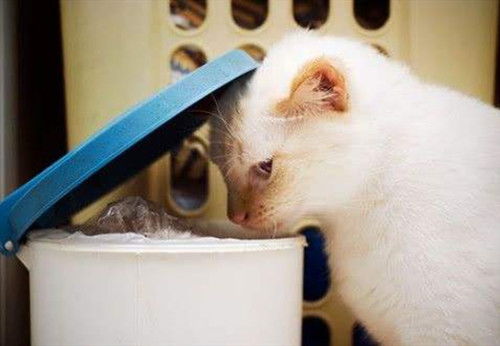
How to Cure Cat Bite: A Comprehensive Guide
Cat bites can be quite painful and may lead to serious infections if not treated properly. Whether it’s a playful nipping or a defensive bite, it’s essential to know how to care for a cat bite to ensure a quick and safe recovery. In this article, we will delve into the various aspects of treating a cat bite, from immediate first aid to long-term care.
Immediate First Aid

When you notice a cat bite, it’s crucial to act quickly. Here’s what you should do:
-
Wash the wound immediately with soap and water to remove any dirt or bacteria.
-
Apply an antiseptic solution, such as hydrogen peroxide or alcohol, to further clean the wound.
-
Bandage the wound to protect it from further contamination and to reduce swelling.
-
Seek medical attention if the bite is deep, if there’s significant bleeding, or if the wound shows signs of infection, such as redness, swelling, or pus.
Monitoring for Infection

After providing immediate first aid, it’s important to monitor the wound for any signs of infection. Here are some common symptoms to watch out for:
-
Redness and swelling around the wound
-
Pain that worsens over time
-
Discharge from the wound, which may be yellow, green, or bloody
-
Fever or chills
If you notice any of these symptoms, it’s essential to seek medical attention promptly.
Home Remedies for Cat Bite Care

In addition to medical treatment, there are several home remedies that can help promote healing and reduce pain:
-
Applying a warm compress to the affected area can help reduce swelling and pain.
-
Using over-the-counter pain relievers, such as ibuprofen or acetaminophen, can help manage pain and inflammation.
-
Keeping the wound clean and dry is crucial to prevent infection.
-
Changing the bandage regularly to ensure the wound stays clean and dry.
Preventing Future Cat Bites
Preventing cat bites is the best way to avoid the need for treatment. Here are some tips to help reduce the risk of being bitten by a cat:
-
Understand your cat’s body language and avoid situations that may provoke a bite.
-
Supervise playtime, especially with young children or unfamiliar cats.
-
Train your cat to be gentle during play and petting sessions.
-
Keep your cat’s nails trimmed to reduce the risk of a severe bite.
When to Seek Professional Help
While most cat bites can be treated at home, there are certain situations where you should seek professional medical attention:
-
The bite is deep or the wound is large.
-
There is significant bleeding that doesn’t stop after applying pressure.
-
There are signs of infection, such as redness, swelling, or discharge.
-
You have a weakened immune system or a history of infections.
Remember, it’s always better to err on the side of caution when it comes to cat bites.
Table: Cat Bite Treatment Timeline
| Timeframe | Actions |
|---|---|
| Immediate | Wash the wound, apply antiseptic, bandage the wound |
| 24-48 hours | Monitor for infection, apply warm compress if needed, change bandage regularly |
| After 48 hours | Continue monitoring for infection, apply warm compress
Related Postslittle bites 2024,Little Bites 2024: A Comprehensive GuideLittle Bites 2024: A Comprehen… how to make an insect bite stop itching,How to Make an Insect Bite Stop ItchingHow to Make an Insect Bite Sto… Like |





